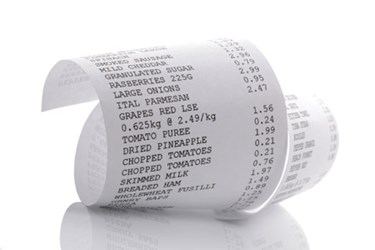Why Value Channel Shoppers Prefer Receipt-Based Offers

Why Value Channel Shoppers Prefer Receipt-Based Offers
inStream completed its annual value channel shopper tracking study, interviewing shoppers nationwide at value channel retail locations. The study found value shoppers’ interest in receipt-based offers grew year-over-year and outpaces awareness of and interest in other types of promotions, including digital offers. inStream’s Jennifer Bellemare recently took time to discuss the study with RetailOperationsInsights.com.
Q: E-receipts are often promoted as a way to save paper and are convenient. Why the do shoppers prefer receipt-based offers?
Bellemare: Our value channel retailers find receipt-based offers have immediacy in relevance and delivery, with no additional action needed from the customer. Up to 82 percent of our Value Channel Shopper Tracking Study respondents are aware of the coupons printed on their receipts, and more than half of them are returning to the store to redeem these offers.
Q: E-receipts offer a way to collect data paper receipts don’t. What is the downside of e-receipts paper can overcome?
Bellemare: Paper receipts can be delivered to 100 percent of a retailer’s customers. No opt-ins, sign ups, or contact information required on the part of the customer, who may not want to share their data with every retailer. It makes it easy for all customers to use the offers printed on the receipt. In addition, paper receipt offers do enable data collection on offer redemption rates and impact on sales, as long as the offer runs with a unique barcode or call to action.
Q: How likely are shoppers to redeem receipt-based coupons versus digital channels?
Bellemare: The value shoppers we surveyed indicated they are 58 percent more likely to use a receipt-based coupon compared to only 16 percent who look for digital store coupons. These results are consistent with other studies that have been done amongst retail customers outside of the value channel. For our retail partners, adoption of paper receipt offers is not an either-or decision; all of them leverage multiple channels to enable shoppers to receive offers how and when they want to receive them.
Q: What role does the generational element play in receipt-based offers versus digital offers?
Bellemare: Surprisingly, not as big as you’d expect. While it’s true younger generations are more engaged digitally than their baby boomer counterparts, receipt-based offers are used by all shoppers. Only 9 percent of Millennials surveyed in our Value Channel Shopper Tracking Study report looking for store coupons through digital channels, less than the 16 percent average of all shoppers we surveyed — and four out of five shoppers reported offers printed on receipts are the most convenient. Value retailers are popular with the millennial crowd, who shop there for convenience and savings rather than necessity.
Q: How much impact do privacy concerns have on the popularity of receipt-based offers?
Bellemare: As mentioned before, there is no requirement for personal information to be exchanged in order to receive or use a receipt-based offer. For customers who want to remain relatively anonymous, the receipt offer gives a brand or retailer the ability to target a shopper based on purchase activity at the point-of-sale without the need to build an individual profile for that person. There are many ways offers can be personally targeted to the shopper without knowing that it’s Jane or John Doe at the register.
Q: What impact will the reliance on mobile have on printed receipts, and when will that impact be felt?
Bellemare: We have been hearing about the advent of mobile in the retail experience for years, and while shoppers are relying on mobile more than they had even two or three years ago, the reliance on mobile to receive offers or pay for one’s purchase is far from widespread, especially in the value channel. For every Starbucks, which most would agree is on the leading edge of leveraging mobile in the retail experience, the majority of retailers and advertisers rely on a multi-channel approach that also includes paper receipts, in-store displays, and even the traditional paper circular which has been around for more than a century.
Q: What advantages does personalizing receipt-based offers present?
Bellemare: Handing the customer a paper receipt is still the most common action a cashier takes at the end of a transaction. Personalization of the receipt offer is tied to the purchase activity in the moment — you don’t need to build a history with the shopper or know everything they’ve ever purchased previously to provide relevant, targeted, and valuable offers to that specific customer. You can deliver an offer in real-time that the customer will return and use, and you can drive further engagement as a result of their shopping behaviors.
Q: What role does the paper receipt play in spurring loyalty and repeat customers?
Bellemare: Our value channel retailers have had a high level of success with bounceback offers printed on receipts, and we often say paper receipts aren’t dead for this very reason. The printed offer on a paper receipt puts value in the hand of the customer immediately, and the customer can see the connection to their next shopping trip and the savings available. These bounceback offers often result in an average spend increase when the shopper redeems the offer.
Q: In what ways can mobile devices be leveraged via printed receipts?
Bellemare: With front-of-receipt printed offers, advertisers can include call to actions that have a digital component, such as an SMS code, URL, or QR code. The advertiser can also run a unique code campaign, tying the purchase back to a loyalty or points program, enter to win contests online, or any other number of interactive ways to engage further with the customer based on a specific product they purchased.
